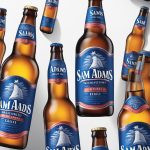Corona is often associated with sunny beaches and lime wedges, but when it comes to categorizing it as a domestic beer, the answer depends on the perspective of the consumer. Broadly speaking, a domestic beer is one that is produced within the country it is being sold in. For those living in Mexico, Corona is indeed a domestic beer, as it is brewed by Grupo Modelo, which is based in Mexico. However, outside of Mexico, Corona is considered an imported beer. In the United States, for instance, it falls under the imported category because it is brought in from its country of origin.

The distinction between domestic and imported beers is significant because it can affect the price, availability, and perception of the beer. Many beer enthusiasts look for domestic labels to support local breweries or to find fresh tastes specific to their region. Conversely, imported beers like Corona have a global reputation and provide a taste of another country’s brewing traditions and flavors. The brand behind Corona has ensured its widespread availability, making it a common sight in countless countries where it is enjoyed.
Key Takeaways
- Corona is a domestic beer in Mexico but considered imported in other countries.
- The distinction between domestic and imported impacts its market perception and availability.
- The brand consistently markets Corona as a premium, globally recognized beer.
Table of Contents
Is Corona a Domestic Beer? The Brand Behind Corona

Corona is a prominent beer brand recognized globally for its refreshing taste. Its roots can be traced back to Mexico, where it is produced by Grupo Modelo. The brand also maintains a strong presence in international markets, particularly in the United States, thanks to an exclusive distribution agreement with Constellation Brands.
Grupo Modelo
Grupo Modelo, founded in 1925, is the esteemed Mexican brewery that created Corona Extra—the brand’s staple beer. Through the years, Corona has become Mexico’s top-selling beer and has enjoyed impressive popularity in global markets. Responsible for the domestic production, Grupo Modelo operates from Mexico and maintains a diverse portfolio of beer brands, with Corona being its star product.
Constellation Brands
In the United States, Constellation Brands is the name behind Corona’s distribution and sales. This company acquired the rights to sell Corona and other Grupo Modelo beers in the U.S., which has greatly contributed to Corona’s position as one of America’s favorite imported lagers. Its strategic focus on marketing and supply chain efficiency has propelled sales, cementing Corona’s reputation as a leading player in the beer market.
Corona Varieties
The Corona brand offers several types of beer, each tailored to different tastes and preferences. From light and refreshing to richer and full-bodied, there’s a variety to suit everyone’s palate.
Corona Extra
Corona Extra is the flagship beer of the brand and is known for its golden color and smooth taste. It is often served with a lime wedge to enhance its crisp, refreshing flavor. This is the classic choice enjoyed by many around the world.
Corona Light
For those seeking a lighter option, Corona Light offers a reduced-calorie alternative. It delivers a similar flavor profile to Corona Extra but with fewer calories and a lighter body, making it a popular choice among health-conscious beer drinkers.
Corona Premier
Corona Premier is a relatively newer addition, catering to the sophisticated palate. With a lower carbohydrate count and calorie content, it maintains the smooth Corona taste and is designed for those who prefer a lighter beer without compromising on flavor.
Corona Familiar
Designed to be enjoyed in a group, Corona Familiar boasts a richer flavor that’s more robust than Corona Extra. Available in larger bottles, it’s perfect for sharing and is a common sight at gatherings among friends and family.
Coronita
Coronita, affectionately known as the “little Corona,” is a smaller version of Corona Extra. Each bottle contains less beer, making it ideal for those who prefer a smaller serving size without sacrificing the taste they enjoy.
Brewing Process and Ingredients
The production of Corona beer involves specific techniques and ingredients that contribute to its distinct flavor profile, characterized by a crisp and clean taste.
Brewing Techniques
The brewing process for Corona is carefully managed to ensure consistency and quality. The beer is produced through a bottom fermentation process, a common method for crafting lagers. This technique involves fermenting the beer at cooler temperatures, which contributes to its clean and crisp characteristics. The fermentation is monitored to protect the beer’s light flavor and to prevent any off-tastes from developing.
Main Ingredients
The primary ingredients in Corona are water, malted barley, hops, corn, and yeast. Each component is crucial to the final flavor of the beer:
- Water: The foundation of the beer, Corona uses water that is purified and tested to maintain a consistent taste.
- Malted Barley: Malted barley provides the sugars needed for fermentation and contributes to the beer’s color and flavor.
- Hops: Hops add a slight bitterness that balances the sweetness of the malt and corn, while also acting as a natural preservative.
- Corn: Corn is incorporated in the grist to lighten the beer’s body and give it a smooth mouthfeel.
- Yeast: The yeast is responsible for fermentation, converting sugars into alcohol and releasing carbon dioxide, which naturally carbonates the beer.
By employing these ingredients, along with their specialized brewing techniques, Corona achieves its signature lightness and refreshing quality that is enjoyed by consumers around the world.
Tasting Notes

When sampling Corona, enthusiasts pay particular attention to its distinct flavor profile, recommended servings, and culinary pairings.
Flavor Profile
Corona exhibits a pale straw color and offers a taste that is often described as slightly sweet. The inclusion of a lime wedge is a traditional method to enhance its mild hop character. Despite occasional references to a skunk-like aroma, the beer remains popular for its crisp and clean palate with a smooth finish.
Serving Suggestions
Corona is best served cold, between 35 to 40 degrees Fahrenheit, in a tall pilsner glass which compliments its light color and allows the aroma to dissipate correctly. This is essential to fully appreciate the beer’s subtle flavors.
Pairings
This beer pairs successfully with a variety of foods. Lighter fare such as chicken, seafood, or light salads complement its delicate taste, as well as strong flavors like citrus or Mexican dishes that mirror the zest of the lime commonly associated with Corona. Avoid heavy, robust foods that could overpower the beer’s gentle flavor profile.
Marketing and Consumer Perception
Corona beer’s positioning in the market is shaped significantly by its targeted marketing strategies and its resonance with consumers through various platforms. The brand effectively promotes an association with leisure and the beach lifestyle, engaging audiences and standing out in a crowded marketplace.
Advertisements and Sponsorships
Corona has cultivated a strong brand image through memorable advertisements that often feature serene beach scenes, emphasizing relaxation and enjoyment. This imagery aligns with the beach lifestyle that they aim to associate with their beer, which is a key aspect of their marketing strategy. Sponsorship deals, particularly in sports like football and boxing, expand their visibility and strengthen the brand’s connection with a broad audience.
Social Media Presence
Their presence on platforms such as Instagram demonstrates how Corona leverages social media for brand promotion. With creative content that encapsulates their beach-friendly brand message, Corona not only advertises its product but also fosters a sense of community among its consumers. This social media engagement contributes to the beer’s perception as a domestic product, despite it being an imported beer in many markets, including the United States.
Availability and Accessibility
When considering whether Corona is a domestic beer, one must look at both its distribution channels and its retail presence. These factors are critical in understanding where and how Corona beer is accessed by consumers, particularly in the United States.
Distribution Channels
Corona is categorized as an imported beer in the United States, originating from Mexico. It reaches American consumers through a network of distributors that specialize in managing the logistics of international alcohol importation. These distributors ensure that Corona is widely available across various venues, from local bars to large-scale retail events.
Retail Presence
In retail settings, Corona maintains a strong presence, with its products showcased in many liquor stores, supermarkets, and convenience stores. Americans can easily find an array of Corona products, including the widely recognized Corona Extra, ensuring that sales remain robust. Whether in a large city or a small town, Corona’s retail availability remains high, reflecting its status as one of the most popular imported beers in the country.
Comparisons to Other Beers
When comparing Corona to other beers, one must consider whether it’s a domestic or imported product, its status as a craft or commercial brand, and how it stands up to its competitors.
Domestic vs Imported
Corona is considered an imported beer in the United States as it originates from Mexico. In contrast, domestic beers like Budweiser or Coors are produced within the country. Mexican beers like Modelo and Pacífico also fall into the imported category when evaluated by the American market. The distinction between domestic and imported beers can influence consumer preference and market pricing.
Craft vs Commercial
Craft beers are typically characterized by their smaller production scale and greater emphasis on unique flavors and brewing techniques. They are often produced by independent breweries. Commercial beers, which include brands like Corona, Heineken, and Stella Artois, are brewed on a larger scale with wider distribution. Corona and Heineken sit on the lighter side of the flavor spectrum compared to the more robust varieties often found in craft ales.
Competitor Analysis
In the realm of light beers, Corona often goes head-to-head with other light lagers such as Coors and Budweiser. Its light, crisp taste provides a refreshing contrast to the fuller-bodied lagers and ales from competing brands. Modelo, another Mexican beer, serves as both a competitor and a compatriot to Corona in the global market. On the international stage, brands like Heineken, Stella Artois, and Pacifico provide varied taste profiles and styles, from Heineken’s distinct yeast flavor to Stella’s European malt character.
Consumer Demographics

Understanding the consumer demographics for Corona beer reveals distinct patterns in purchaser behavior and preferences. This insight assists in comprehending who is buying Corona and on what occasions it is most commonly enjoyed.
Target Audience
Corona has successfully positioned itself as a beer that appeals to a diverse range of Americans, with particular success among college students and those seeking a light, refreshing beverage that embodies a laid-back beach lifestyle. Marketing efforts have tailored the brand to resonate with individuals who enjoy social gatherings and crave a taste of leisure.
Usage Occasions
The beach and summertime gatherings stand out as predominant usage occasions for Corona. Its association with relaxation and good times makes it a common choice for holidays and college spring break events. Likewise, its light flavor profile positions Corona as an ideal companion for backyard barbecues and informal socializing.
Packaging
Corona beer has a distinctive approach to packaging that reflects its brand identity, using clear glass bottles and unique labeling.
Bottle Design
Corona’s bottle design is iconic, featuring a clear glass bottle that allows its light golden liquid to be visible. The typical 330 ml (11.2 U.S. fl oz) bottle is known for its long neck and transparent appearance, which emphasizes the beer’s clarity and purity. Customers often associate the transparent bottle with a fresh and beachy vibe, which is integral to Corona’s image.
Labeling and Branding
The labeling on a Corona bottle is minimalistic and uniform, with the brand’s logo prominently displayed. The label includes Corona’s name in a distinctive font and style, which has been consistent over the years. This consistent branding ensures that Corona is easily recognizable on shelves and in advertisements. The label also exhibits information in multiple languages, reflecting the brand’s international reach.
Corona’s Cultural Impact

Corona beer has permeated various facets of society, becoming an emblem of leisure and beach culture, often associated with relaxation and vacation vibes. It has been frequently featured in pop culture and holds historical significance as a prominent Mexican brew.
Pop Culture References
Corona has claimed its place in pop culture, often seen in films and celebrity endorsements. Notably, actor Vin Diesel’s character in the “Fast and the Furious” franchise is frequently seen with a Corona in hand, reinforcing its image as a beer of choice for moments of camaraderie and celebration. This association with high-profile movies and stars has solidified Corona’s standing in the entertainment world.
Historical Significance
As a Mexican brew, Corona has transcended its origins to become a global player in the beer market. It’s been a symbol of Mexican heritage and pride, consistently enjoyed in numerous countries. This beer also reflects the historical narrative of how a regional brew can become an internationally recognized brand, often associated with the beach and a laid-back lifestyle, reflecting a history of targeted marketing to evoke a sense of escape and enjoyment.
Health and Dietary Considerations
When considering whether Corona is a domestic beer, one must also consider various health and dietary implications, specifically focusing on the calorie and carbohydrate content, as well as its gluten content, which are crucial for those monitoring their diet or with specific dietary restrictions.
Calories and Carbohydrates
Calories: A typical 12-ounce serving of Corona Extra, a light lager, contains about 149 calories. This is a point to consider for those tracking their caloric intake.
Carbohydrates: The same serving has approximately 14 grams of carbohydrates, which is mid-range in comparison to other beers.
Gluten Content
Coronas are not gluten-free. They are made from barley, a cereal grain that contains gluten. Therefore, they should be avoided by individuals with celiac disease or gluten sensitivity. However, there is a variety of Corona that is gluten-removed, Corona Premier, and offers fewer calories and carbohydrates per serving.
Consumer Reviews and Ratings

When considering Corona as a domestic beer, reviews and ratings by experts and consumers alike offer insight into its reputation and taste profile.
Professional Critiques
Corona Extra, a Mexican lager, is often viewed by beer aficionados as a simplistic brew when compared to more complex beers. Critics note that while it may not win awards for complexity, its crisp and approachable flavor has contributed to its substantial popularity.
Consumer Testimonies
On platforms like BeerAdvocate, consumers often engage in taste tests and share their personal experience with Corona. They typically describe it as a refreshing beer, especially when served cold with a lime wedge, although some might find it too light or lacking in depth compared to other lagers.
Environmental and Social Responsibility
As a global beer brand, Corona has made significant strides in addressing environmental concerns and fostering community involvement. These efforts reflect the brand’s commitment to sustainability and positive social impact around the world.
Sustainability Initiatives
Corona has set an industry benchmark by becoming the first global beverage brand to achieve a net zero plastic footprint. This means that Corona recovers more plastic than it uses in its operations. Additionally, the company has launched innovative sustainable packaging solutions, which include using barley straw in its beer pack production, a more environmentally friendly option.
- Key Steps Taken:
- Reaching net zero plastic footprint
- Creating circular beer pack designs
- Using barley straw in packaging
Community Involvement
Community support is a fundamental aspect of Corona’s corporate ethos. The brand not only takes steps to protect the environment but also ensures to contribute positively to the communities it serves. Specific details on the nature of their community involvement, however, were not provided in the search results.
The Business of Beer
The beer industry is a significant economic force and is shaped by diverse trends and ownership structures. Financially, it involves large multinational corporations and numerous local breweries, each impacting the economy differently.
Economic Impact
The production and sales of beer contribute substantially to economies worldwide. Multinationals like Anheuser-Busch InBev (AB InBev), are pivotal players, with their operations spanning the globe. In the United States, brands like Miller High Life have historically been seen as domestic staples, supporting local economies through production and distribution networks.
AB InBev reported revenue growth driven by higher global sales, illustrating the economic influence of beer conglomerates. In contrast, domestic sales by smaller breweries also significantly contribute to regional economies, highlighting the difference in scale but not in importance.
Industry Trends
The beer market is experiencing shifts, influenced by changes in consumer preferences and strategic business decisions. Anheuser-Busch InBev, the owner of various international beer brands, adapts by investing in craft and specialty beers to meet diverse tastes.
Sales metrics indicate an increasing preference for unique and local beer options, challenging giants like AB InBev to innovate. Brands like Miller High Life also adjust, positioning themselves to claim both domestic familiarity and adapt to the evolving market landscape.
Legal Aspects

The legal classification of Corona as a “beer” has significant implications for regulatory compliance and trademark rights.
Regulations and Compliance
Corona must adhere to the beverage laws that govern the production and sale of alcoholic drinks within various jurisdictions. These laws define what can be labeled as “beer” and dictate the tax rates and distribution channels that apply to these beverages. For example, a recent court case tackled the issue of whether Corona Hard Seltzer can be legally defined as “beer”.
Trademark Disputes
Trademark law becomes a critical aspect when a brand like Corona explores product expansion while maintaining its trademark protection. There have been legal disputes about whether extensions, like Corona’s Hard Seltzer, fall under the existing trademark for beer products. These disputes, such as the one addressed by the jury in the Corona case, focus on the interpretation of agreements and the scope of trademark licenses.
Frequently Asked Questions

This section responds to common queries about Corona beer, including its origins, proprietorship, pricing, alcohol content, establishment year, and ingredients.
Who is the proprietor of Corona beer?
The proprietor of Corona beer is Constellation Brands, a leading beverage alcohol company.
Which country originates Corona beer?
Corona beer originates from Mexico and is one of the country’s most recognizable exports in the beer category.
What are the reasons behind Corona beer’s premium pricing?
Corona beer’s premium pricing can be attributed to its positioning as an imported beer, marketing strategies, and brand reputation.
What is the alcohol content in Corona beer?
The alcohol content in Corona Extra, the brand’s flagship beer, is approximately 4.6%.
In which year was Corona beer established?
Corona beer was first brewed in 1925 by Grupo Modelo.
Can you list the ingredients used in Corona beer?
The ingredients used in Corona beer are barley, hops, yeast, and water. It is known for its characteristic smooth, crisp, and refreshing flavor.







